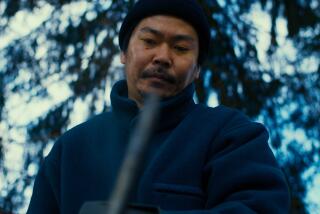PERSPECTIVE ON VIOLENCE : Explaining America to the Japanese : Citizens, visitors share the same peril; there are no ‘islands’ in a furious world.
I grieve for Go Matsuura and Takuma Ito, gunned down in a Los Angeles carjacking, as I grieved for Yoshi Hattori and for Masakazu Kuriyama, who was shot to death at a BART train station in Concord last August--all victims of the senseless violence and ready availability of guns so prevalent in the United States. Like Ambassador Walter Mondale, I, too, wish to apologize to the Japanese people.
But I would not say, as the ambassador did, that these killings should be viewed as rare occurrences, considering the 3 million Japanese tourists and 50,000 students who come to this country every year. Of course, he is correct in a purely statistical sense. But this is like saying that Americans do not usually assassinate their presidents.
Random violence in America is so widespread and common that even ordinary people take all sorts of precautions, and not only in major urban areas. Yoshi Hattori was shot in a residential neighborhood in Baton Rouge, La., by a man who said that he was afraid of crime--who decided to shoot first and ask questions later.
One of the many ironies surrounding American lawlessness is that Hollywood films glorifying such violence are enormously popular all over the world, including Japan. I am thinking not merely of gangster films or detective stories, but of surrealistic films like “Robocop” and “The Terminator,” drenched in mindless mayhem and gore. Matsuura and Ito were film enthusiasts and had come to Southern California to study filmmaking.
The United States has seen a lot of debate about whether violent films lead to violent (perhaps imitative) behavior, but there is great resistance in Hollywood to censoring or eliminating such violence altogether because it is too popular and brings in too much money.
Similarly, despite opinion polls that show a majority of U.S. citizens favoring some form of gun control, there is great resistance to actually passing such laws. Americans fought for their national freedom using guns, and many of them lived at least until the turn of this century (and a few, in areas like Alaska, still do) in places that had no police, where citizens themselves dealt with crime through “rough justice,” much as the Samurai did in Kurosawa’s famous film “Magnificent Seven.”
Ultimately, the modern state disarmed the Samurai. The Japanese wonder why the United States could not imitate Japan in allowing only the police to be armed. But guns may not be the root of the problem. In a carefully reasoned article in the March issue of the Atlantic Monthly, law professor Daniel Polsby argues that gun ownership in the United States--whether legal or illegal--will decline only when enough criminals cease to find criminal behavior profitable and when ordinary citizens are no longer afraid of criminals. The underlying cause of crime, he argues, is not the prevalence of guns but the fact that “for certain people, predation is a rational occupational choice.”
Japan, of course, has its own criminal underclass, but it tends to be organized by yakuza (Mafia-like families). There are even occasional “gang wars” and “shootouts” among such groups, although American police have discovered that yakuza killings often occur abroad (say, in Los Angeles or Las Vegas), where the chance of being caught is smaller. A year or so ago, when Angelenos were reproaching themselves for the death of yet another “innocent” Japanese tourist, it turned out to be a yakuza- ordered “hit” on a member of a rival gang.
Nonetheless, Japan is unquestionably a much safer society than the United States. And the United States is probably safer than most of sub-Saharan Africa, Somalia, Colombia, Brazil, Mexico and perhaps Russia.
In another very important Atlantic Monthly article (in the February issue), Robert Kaplan argues that crime, poverty, overpopulation, tribalism and disease will soon turn much of the underdeveloped world--and perhaps even parts of the semideveloped world--into ungovernable places where Thomas Hobbes’ “war of everyone against everyone” prevails and all live in “continual fear and danger of violent death.” In such a world, rich enclaves can attempt to wall themselves off. Kaplan evokes the image of a stretch limousine in which people like the Japanese may, for a time, navigate the dirty, dangerous and potholed streets of the rest of the world. But sooner or later the limousine will break down, or an envious and angry outsider will throw a rock through the windshield.
That is why ultimately I have to agree with Ambassador Mondale that the Japanese should not pull up the drawbridge and isolate themselves in their own country. It is worth remembering that the great poet John Donne, a contemporary of Hobbes in what was a period of great civil turmoil in England, wrote: “No man is an island, entire of itself. . . . And therefore never send to know for whom the bell tolls; it tolls for thee.”
More to Read
Sign up for Essential California
The most important California stories and recommendations in your inbox every morning.
You may occasionally receive promotional content from the Los Angeles Times.










